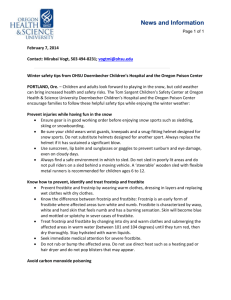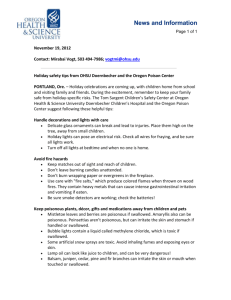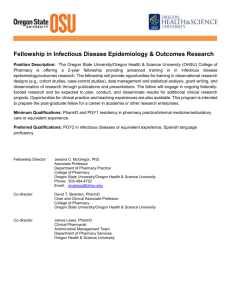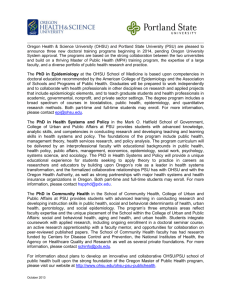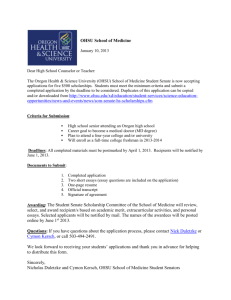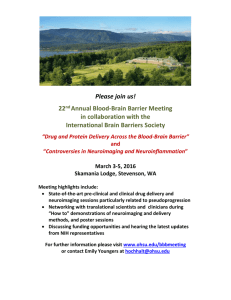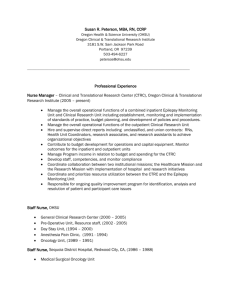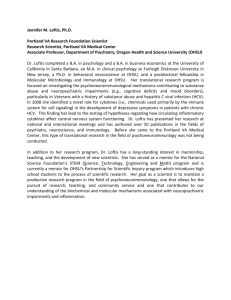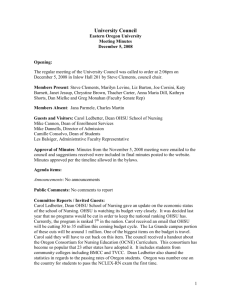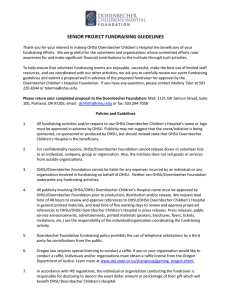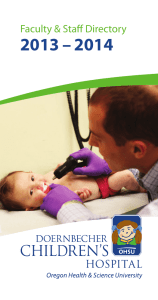Fall Halloween Safety Tips - Oregon Health & Science University
advertisement
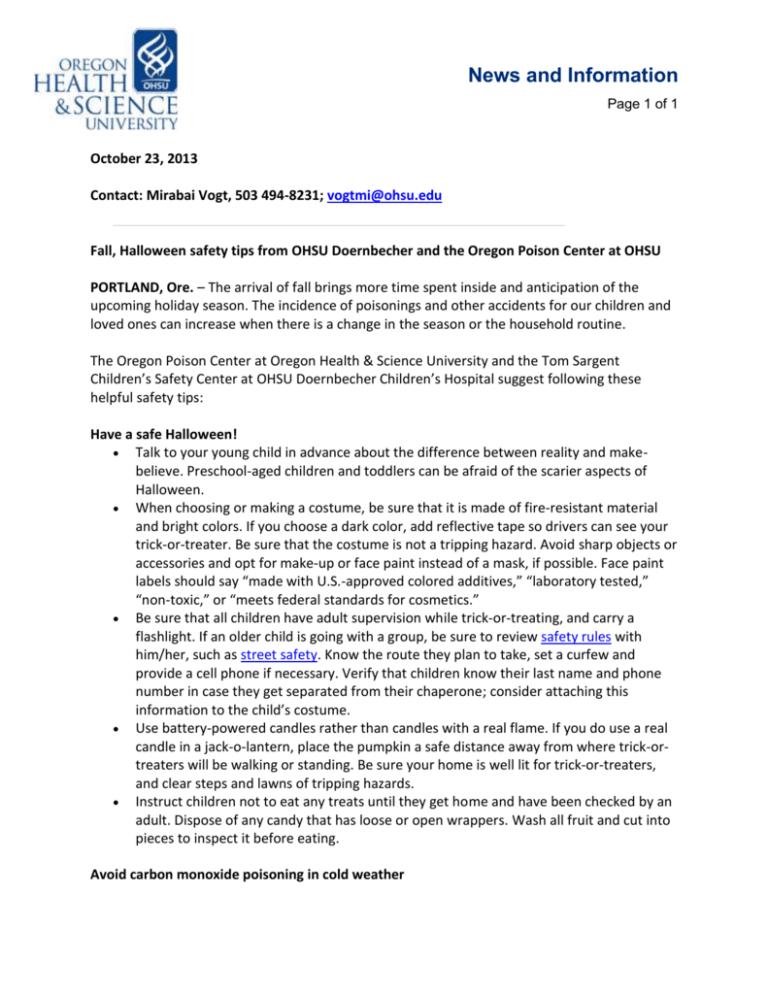
News and Information Page 1 of 1 October 23, 2013 Contact: Mirabai Vogt, 503 494-8231; vogtmi@ohsu.edu Fall, Halloween safety tips from OHSU Doernbecher and the Oregon Poison Center at OHSU PORTLAND, Ore. – The arrival of fall brings more time spent inside and anticipation of the upcoming holiday season. The incidence of poisonings and other accidents for our children and loved ones can increase when there is a change in the season or the household routine. The Oregon Poison Center at Oregon Health & Science University and the Tom Sargent Children’s Safety Center at OHSU Doernbecher Children’s Hospital suggest following these helpful safety tips: Have a safe Halloween! Talk to your young child in advance about the difference between reality and makebelieve. Preschool-aged children and toddlers can be afraid of the scarier aspects of Halloween. When choosing or making a costume, be sure that it is made of fire-resistant material and bright colors. If you choose a dark color, add reflective tape so drivers can see your trick-or-treater. Be sure that the costume is not a tripping hazard. Avoid sharp objects or accessories and opt for make-up or face paint instead of a mask, if possible. Face paint labels should say “made with U.S.-approved colored additives,” “laboratory tested,” “non-toxic,” or “meets federal standards for cosmetics.” Be sure that all children have adult supervision while trick-or-treating, and carry a flashlight. If an older child is going with a group, be sure to review safety rules with him/her, such as street safety. Know the route they plan to take, set a curfew and provide a cell phone if necessary. Verify that children know their last name and phone number in case they get separated from their chaperone; consider attaching this information to the child’s costume. Use battery-powered candles rather than candles with a real flame. If you do use a real candle in a jack-o-lantern, place the pumpkin a safe distance away from where trick-ortreaters will be walking or standing. Be sure your home is well lit for trick-or-treaters, and clear steps and lawns of tripping hazards. Instruct children not to eat any treats until they get home and have been checked by an adult. Dispose of any candy that has loose or open wrappers. Wash all fruit and cut into pieces to inspect it before eating. Avoid carbon monoxide poisoning in cold weather News and Information Page 1 of 1 Be aware of increased exposure to carbon monoxide, a colorless, odorless and tasteless gas that can be fatal if inhaled in large quantities. The risk of carbon monoxide poisoning increases when the weather turns cold, heating devises are used and closed windows decrease fresh air circulation. Know what can cause increased exposure, such as a leaking car muffler, improperly functioning home heating furnaces, woodstoves used in poorly ventilated rooms or burning charcoal indoors. Ensure proper ventilation in your home or vehicle, and get fresh air immediately if symptoms such as headaches, nausea, sleepiness or vomiting occur. Install carbon monoxide detectors on every level of your home; use detectors that are approved by Underwriters Laboratories, these products will have an ‘UL-approved’ statement on the packaging. Check heating appliances annually and before you first use them in cold weather. Keep antifreeze and windshield washing fluid away from children and pets Prevent exposure to antifreeze products and windshield-washing fluid, which contain toxic chemicals that can cause severe illness or blindness if ingested; large amounts can be fatal. Store these and other car care products in locked cabinets and never put them in old food containers for storage. Rinse empty containers thoroughly and recap before discarding. Plan for fun and safe holiday celebrations Take a few minutes to poison-proof your home in anticipation of visiting holiday guests and the altered household routine that inevitably accompanies the holiday season. Handle decorations and lights with care. Keep poisonous plants, décor and gifts away from children and pets; lock medicines away and out of reach. Be sure that any houseguests store medication safely away from children. If you are traveling for the holidays, have your child’s care seat checked. Call the Tom Sargent Children’s Safety Center at OHSU for more information: 503 494-3735. Post the Oregon Poison Center’s number (1 800-222-1222) by home phones and save to cell phones. About the OHSU Doernbecher Tom Sargent Children’s Safety Center The OHSU Doernbecher Tom Sargent Children’s Safety Center is dedicated to reducing unintentional injuries in children through education and distribution of safety products. For more information, please call 503 418-5666 or visit www.ohsu.edu/childsafety for low cost safety products, educational materials or to find a car seat check-up event in your area. News and Information Page 1 of 1 About the Oregon Poison Center The Oregon Poison Center (OPC) at Oregon Health & Science University provides 24-hour emergency treatment information for people experiencing a poisoning or toxic exposure. Call the poison center hot line number (1 800-222-1222) for all poison emergencies and questions. Please call, no question is too small.
